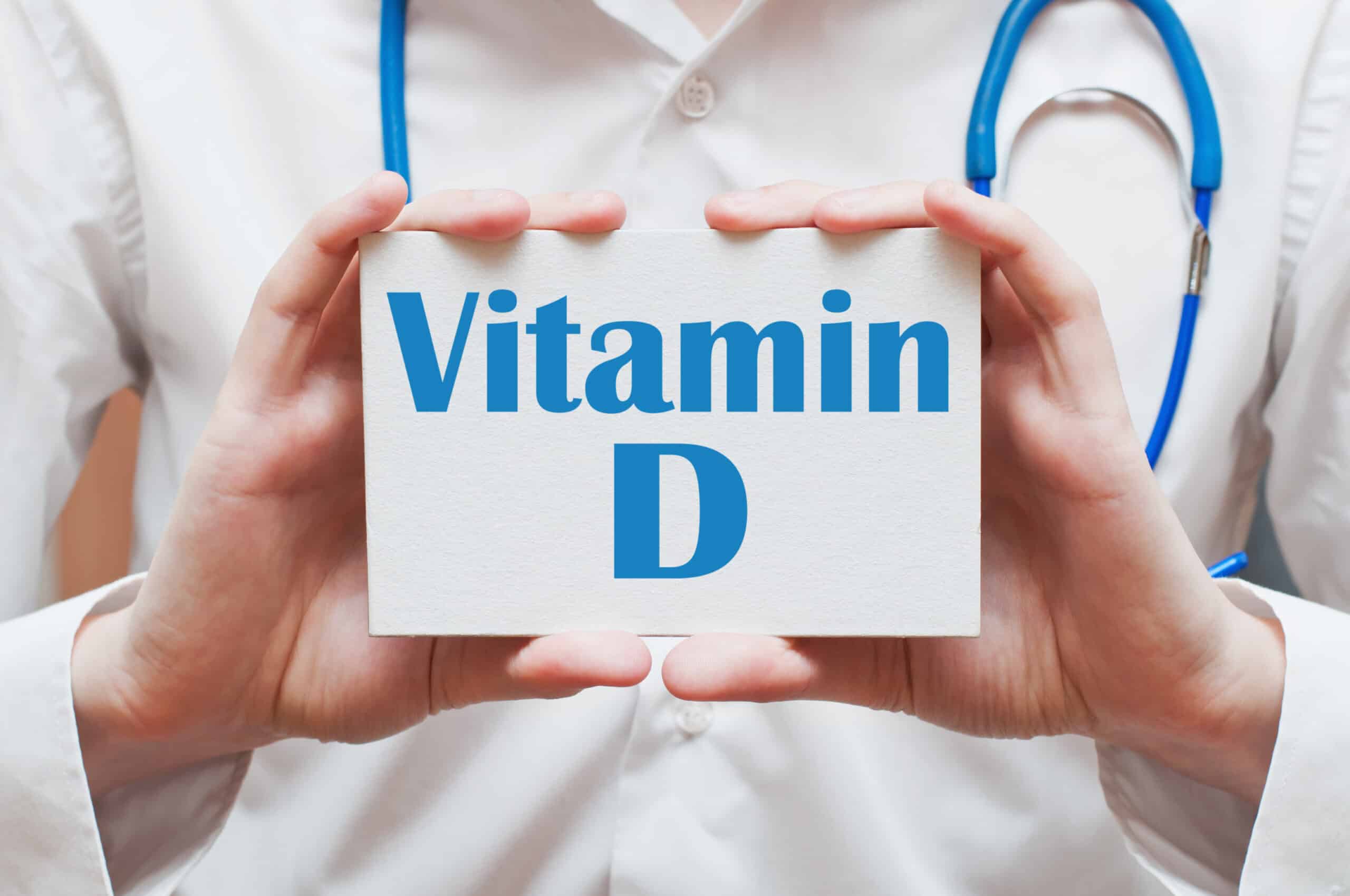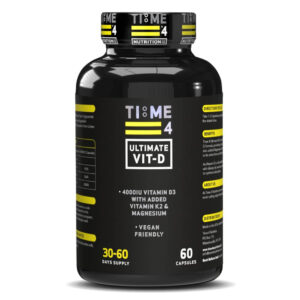VITAMIN D: HERO OR HYPE? WHAT DOES THE SCIENCE SAY?
Vitamin D: Hero or Hype?
What is Vitamin D? – What does the science say?
(Click on the Reference Numbers in Blue for More Info)
If you ask most people what they know about vitamin D, they will probably say something about sunlight and bones. While they are correct in that it is essential for healthy bones and our body can produce it from sunlight, there’s much more to vitamin D: Not only is it essential for good health, but also for optimal physical performance.
The last decade has seen a large rise in research and general interest in vitamin D, with many athletes now supplementing it as part of their regular nutrition strategies. This growth in interest has been due largely to our better understanding of the vital physiological role it plays within the body, in conjunction with a greater understanding of the scale and effect of vitamin D deficiency, including among athletes.
In this article, we are going look at what the science says about vitamin D and some of the many ways in which it can benefit you.
What is Vitamin D?
Vitamin D is a fat-soluble vitamin, which plays an essential role in many functions of the body including the regulation of phosphorus and maintaining the structure of bone and teeth, and normal immune function. It can help to reduce depression, aid weight loss and play a role in muscle growth and repair. It is particularly important for the intestinal absorption of calcium, magnesium, and phosphate, as well as many other physiological effects.
There are two main types of vitamin D known as D3 (cholecalciferol) and D2 (ergocalciferol or calciferol). Generally, the recommended form of vitamin D is vitamin D3. Although many supplements contain vitamin D in the form of D2.
When vitamin D3 enters the circulation, it is converted to a substance known as 25-hydroxyvitamin D3 (abbreviated 25(OH)D₃) in the liver. It is 25(OH)D that is routinely used as a measure of blood vitamin D concentrations.
Interestingly, vitamin D is actually a prohormone. These are substances that the body is able to convert into hormones. Once Vitamin D is absorbed, it is then converted into a hormone (calcitriol) in the liver and kidneys, to help absorb calcium and distribute it throughout the body.
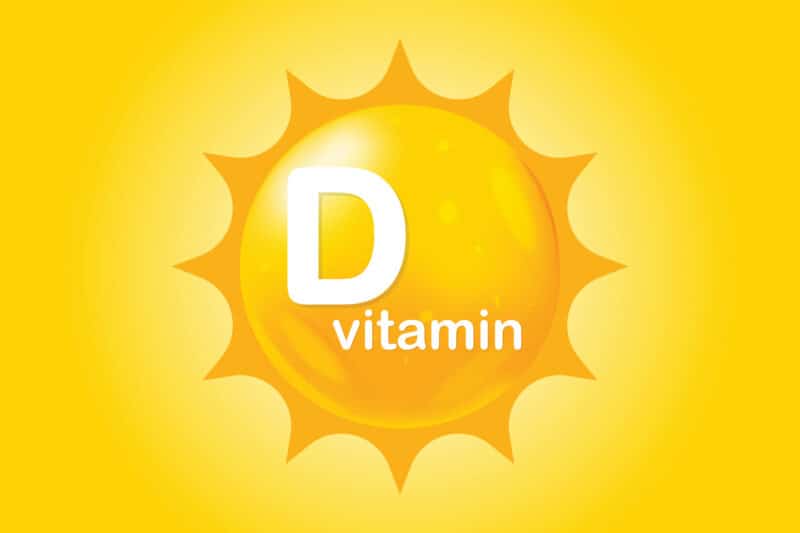
Where Do We Get Vitamin D From?
The majority of our vitamin D (80-90%) is produced by our body in response to the skin’s exposure to sunlight. The sun’s ultraviolet B (UVB) rays hit cholesterol in the skin cells, providing the energy for vitamin D synthesis to occur. This is why it is sometimes referred to as the ‘sunshine vitamin’.
In Theory from about late March/early April to the end of September, the majority of people in the UK should be able to make all the vitamin D they need from sunlight with just 15 minutes of exposure to arms and legs 3 times per week. However, in reality this is difficult for many people to achieve, particularly if they are trying to obtain sufficient vitamin D to optimise their levels, rather than just maintain the minimum required to prevent disease.
In the winter getting sufficient vitamin D from the sun becomes more difficult and supplementation is often advised. Black, Asian and Minority Ethnic (BAME) groups are most at risk, as darker skin produces far less vitamin D than lighter skin from exposure to sunlight. In fact, it requires at least three to five times longer exposure to make the same amount of vitamin D as pale skin.
Consequently, low levels are found in significant numbers of all population groups in the UK: in winter 30-40% of all age groups in the general population are classed as deficient. This figure has been shown to be as high as 93% in black and ethnic minority populations. Even towards the end of summer 8% of adults and 13% of adolescents remain deficient.
The remaining 10-20% of our vitamin D comes from our diet through foods such as oily fish, eggs, fortified fat spreads and some fortified breakfast cereals, but it’s difficult to get enough from food alone, as few foods provide it and often only in small amounts. Therefore, the routine use of vitamin D supplements is being recommended increasingly.
Does Vitamin D Improve Immune Function?
Vitamin D’s role in immune function has received considerable attention recently because there are an increasing number of studies highlighting its role in the prevention and treatment of viral illnesses such as colds, flu and Covid 19.
A review by Gleeson (1) on the immunological aspects of sport nutrition highlighted the importance of vitamin D for immune function when noting that vitamin D may be a particular concern as recent studies have emphasised its importance in limiting infection episode incidence and duration in both the general population and in athletes and many individuals exhibit inadequate vitamin D status during the winter months.
In a review of the benefits of vitamin D supplementation for athletes, Grant and colleagues (2) noted that clinical trials have confirmed that supplementation reduces risk of acute respiratory tract infections, and approximately 30 observational studies have shown that incidence, severity, and death from COVID-19 are inversely correlated with vitamin D concentrations. Vitamin D supplementation is already familiar to many athletes and sports teams because it improves athletic performance and increases playing longevity. Thus, athletes should consider supplementation to serve as an additional means by which to reduce risk of COVID-19 and its consequences.
Baeke and colleagues (3) reviewed the modulating effects of vitamin D on the immune system. They noted that vitamin D targets various immune cells, including monocytes, macrophages, dendritic cells (DCs), as well as T-lymphocytes and B-lymphocytes. Therefore, playing a role in modulating both innate and adaptive immune responses.
Grant et al., (4) reviewed the roles of vitamin D in reducing the risk of respiratory tract infections. The authors noted that, vitamin D can reduce risk of infections through several mechanisms. These include inducing reactions that can lower viral replication rates and reducing concentrations of pro-inflammatory cytokines which produce the inflammation that injures the lining of the lungs, leading to pneumonia, as well as increasing concentrations of anti-inflammatory cytokines, substances that are secreted by certain cells of the immune system and have an effect on other cells.
A review by Bae and Kim (5) on the roles of micronutrients in the immune system against Covid 19 noted that vitamin D improves the physical barrier against viruses and stimulates the production of antimicrobial substances to help prevent and fight infection.
Borsche et al., (6) conducted a systematic literature review to identify studies on COVID-19 mortality rates versus blood levels of vitamin D. The results of the review suggest that a theoretical point of zero mortality occurs at a vitamin D3 level of approximately 50ng/ml. The authors concluded that their results provide strong evidence that low D3 is a predictor rather than just a side effect of the infection. Despite ongoing vaccinations, the authors recommend raising serum 25(OH)D levels to above 50ng/ml to prevent or mitigate new outbreaks due to escape mutations or decreasing antibody activity.
A study by Nogues et al., (7) investigated the effect of calcifediol (25OHD3) treatment on COVID-19-related outcomes. The results of the study showed that ICU assistance was required by 102 (12.2%) participants. Out of 447 patients treated with calcifediol at admission, 20 (4.5%) required ICU, compared to 82 (21%) out of 391 non-treated. 21 (4.7%) out of 447 patients treated with calcifediol at admission died compared to 62 patients (15.9%) out of 391 non-treated. The authors concluded that in patients hospitalised with COVID-19, calcifediol treatment significantly reduced ICU admission and mortality.
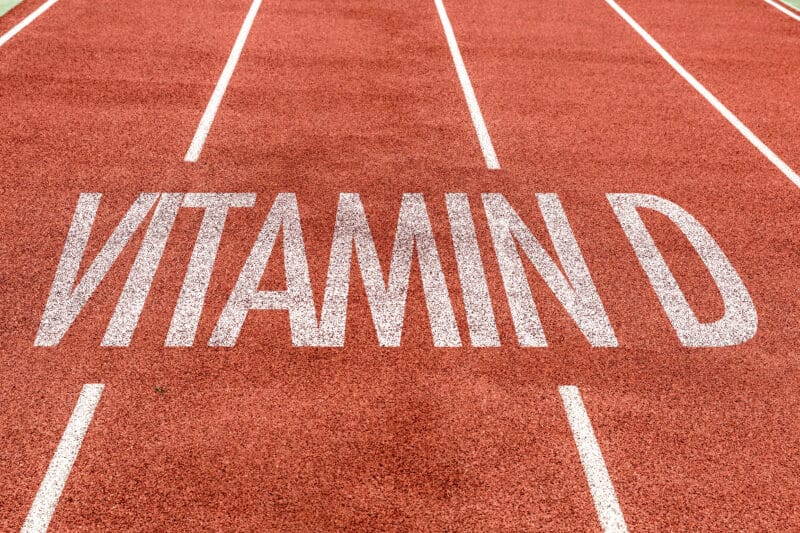
How Does Vitamin D Benefit Athletic Performance?
A number of recent studies have highlighted vitamin D’s role in building and maintaining muscle, particularly when used in conjunction with amino acid supplementation and resistance exercise (8, 9, 10).
This is because the exposure of skeletal muscles to vitamin D influences the genetic processes that enhance muscle cell type, function and growth. At the same time, vitamin D suppresses the expression of myostatin, a protein that regulates muscle size by inhibiting growth.
In addition, vitamin D increases the number of type II or fast twitch muscle fibres and in particular that of type IIA cells, resulting in an increase in muscular power output, while its deficiency causes type IIA cell atrophy and a loss of strength (11).
Here are just a couple of examples of the many studies which demonstrate the effectiveness of vitamin D supplementation:
In a review of the effects of vitamin D on skeletal muscle and athletic performance, Abrahams and colleagues (10) noted vitamin D supplementation has been shown to increase muscle strength, particularly in people who are vitamin D deficient. Higher serum levels of vitamin D are associated with reduced injury rates and improved sports performance. In a subset of the population, vitamin D appears to play a role in muscle strength, injury prevention, and sports performance.
Koundourakis et al., (11) conducted a review of the muscular effects of vitamin D in young athletes, non-athletes and the elderly. The muscles are major targets of vitamin D. Exposure of skeletal muscles to vitamin D induces the expression of multiple myogenic transcription factors enhancing muscle cell proliferation and differentiation. At the same time vitamin D suppresses the expression of myostatin, a negative regulator of muscle mass. Moreover, vitamin D increases the number of type II or fast twitch muscle cells and in particular that of type IIA cells, while its deficiency causes type IIA cell atrophy. Furthermore, vitamin D supplementation in young males with low vitamin D levels increases the percentage of type IIA fibres in muscles, causing an increase in muscular power output. Vitamin D levels are strongly associated with exercise performance in athletes and physically active individuals. In the elderly and in adults below the age of 65, several studies have established a close association between vitamin D levels and neuromuscular coordination.
How Much Vitamin D Do I Need?
According to the NHS (Vitamin D – NHS (www.nhs.uk)) children from the age of 1 year and adults need 10 micrograms of vitamin D a day. This includes pregnant and breastfeeding women, and people at risk of vitamin D deficiency.
A microgram is 1,000 times smaller than a milligram (mg). The word microgram is sometimes written with the Greek symbol μ followed by the letter g (μg).
The amount of vitamin D may also be expressed as International Units (IU). 1 microgram of vitamin D is equal to 40IU. So, 10 micrograms of vitamin D is equal to 400IU.
During winter months, supplementation with 1000-2000IU per day has been shown to help to correct deficiencies with no side effects. High dose supplementation (10,000IU per day) can be detrimental and should be avoided unless medically supervised.
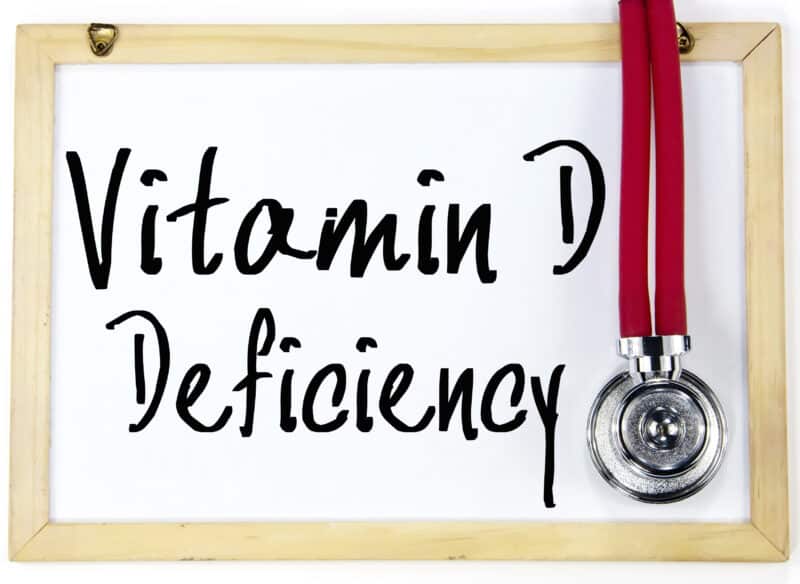
Vitamin D Deficiency
Based on a total serum 25-hydroxyvitamin D (25-OHD), the NHS (Vitamin D – NHS (www.nhs.uk) suggest that vitamin D levels less than 30nmol/L probably indicate vitamin D deficiency & require treatment.
However, higher levels are recommended by other authorities. For example, recall that Borsche et al., (6) recommend raising serum 25(OH)D levels to above 50ng/mL (125 nmol/L) to prevent or mitigate new outbreaks of Covid 19 due to escape mutations or decreasing antibody activity.
Despite the importance of vitamin D being well acknowledged, deficiency is very common. In fact, it’s estimated that about 1 billion people worldwide have low levels of vitamin D.
While many people aware that severe deficiency of vitamin D can lead to bone deformities such as rickets in children, and a condition known as osteomalacia, in which bones become soft and weak, in adults, there are many other less obvious or well acknowledged signs and symptoms of vitamin D deficiency. These include, but are not limited to:
- Increased incidence of illness and infection
- Fatigue
- Bone and back pain
- Muscle pain
- Depression
- Anxiety
- Impaired wound healing
- Bone loss
- Hair loss
- Increased in fat mass (There is an inverse association of serum 25(OH)D and body mass index (BMI) greater than 30 kg/m2, i.e., the higher an individual’s level of body fat the lower their levels of vitamin D are likely to be.
What Increases My risk of Vitamin D Deficiency?
Some of the most common risk factors for vitamin D deficiency include:
- Dark skin
- Being an older adult
- Overweight or obesity
- Not consuming sufficient amounts of vitamin D containing foods
- Insufficient exposure to the sun
- Excessive use of sunscreen when exposing the skin to the sun
- Certain chronic illnesses such as kidney disease, and liver disease
- Health conditions that affect nutrient absorption, such as Crohn’s disease
- Having gastric bypass surgery
- Using certain medications that impact vitamin D metabolism, such as statins and corticosteroids
How is Vitamin D Deficiency Treated?
Treatment for vitamin D deficiency typically consists of supplementation with over-the-counter vitamin D supplements. For severe deficiency, or if levels don’t improve with over-the-counter supplements, a doctor may recommend prescription vitamin D. This comes in much stronger doses of up to 50,000 IU. Another potential option a doctor may consider in extreme cases is vitamin D injections.
Aside from vitamin D supplementation, adding more vitamin-D-rich foods to your daily diet may help. These may include:
- Fatty fish
- Egg yolks
- Fortified cereals
- Milk and juices with added vitamin D
- Yogurt
- Beef liver
As sunlight is also a natural source of vitamin D, going outside more often may increase vitamin D levels. However, this must be balanced with risk of excessive exposure to ultraviolet (UV) light.
What Happens If We Have Too Much Vitamin D?
Although rare, it is possible for vitamin D to build up and reach toxic levels in the body. To prevent this, the NHS (Vitamin D – NHS (www.nhs.uk)) suggest that we should not take more than 100 micrograms (4,000 IU) of vitamin D a day. This applies to adults, including pregnant and breastfeeding women and the elderly, and children aged 11 to 17 years.
Vitamin D3 has been found to increase blood levels significantly more than D2. It appears that each additional 100IU of vitamin D3 you consume per day will raise your blood vitamin D levels by an average of 1ng/ml (2.5nmol/l) (12).
Vitamin D toxicity occurs when blood levels rise above 150ng/ml (375nmol/l). As it is stored in body fat and released into the bloodstream slowly, the effects of vitamin D toxicity may last for several months after an individual stops taking supplements.
Although a vitamin D level of 30ng/ml (75nmol/l) is typically considered adequate, the Vitamin D Council (13) recommends maintaining levels of 40–80ng/ml (100–200nmol/l) and states that anything over 100ng/ml (250nmol/l) may be harmful.
There are 6 main side effects of too much vitamin D:
- Elevated blood levels.
- Elevated blood calcium levels.
- Nausea, vomiting, and poor appetite.
- Stomach pain, constipation, or diarrhoea.
- Bone loss.
- Kidney failure
It is important to understand that you cannot reach dangerously high blood levels of vitamin D through diet and sun exposure alone. It tends to only occur in people who take long-term, high-dose supplements without monitoring their blood levels. For example, there was a case of a woman who had a level of 476ng/ml (1,171nmol/l) after taking a supplement that gave her 186,900IU of vitamin D3 per day for two months. That is a staggering 47 times the generally recommended safe upper limit of 4,000IU per day. Apparently, she was admitted to the hospital after she experienced fatigue, forgetfulness, nausea, vomiting, slurred speech, and other symptoms.

Vitamin K2 and Magnesium
Supplementation with vitamin K2 is generally recommended if you are taking a vitamin D supplement. This is because vitamin K2 is responsible for depositing calcium at the right places in the body, i.e., in the bones and teeth. It also prevents the accumulation of calcium in places where it is not required and can be problematic, i.e., in the arteries and other soft tissue of the body.
The mineral, magnesium, also helps the body to absorb vitamin D, as does consuming a low to moderate amount of fat when taking a vitamin D supplement.
Other Benefits of Vitamin D
Although it is beyond the scope of this article to discuss them in detail, there is evidence to suggest the vitamin D may help with:
- Bone loss
- Depression
- Insulin control
- Cardiovascular disease
- High blood pressure
- Weight loss
- Multiple sclerosis (MS)
Time 4 Nutrition and Vitamin D
Here at Time 4 Nutrition, we always take an evidence-based approach to the development of our products and have long acknowledged the importance of vitamin D. Consequently, we fortify a number of products with this vital nutrient. These include:
Time 4 Cream of Rice – A healthy, versatile, sugar free & gluten free carbohydrate source that can be mixed with hot water & made into a thick & creamy rice porridge.

Time 4 Mega-Pack – Vitamins & Minerals, Omega-3 Fatty Acids, Liver Support, L-Carnitine L-Tartrate, Co-Enzyme Q10, Nootropic Complex & a Herbal Support Capsule.

Time 4 Vit&Min + Vit C provides a comprehensive blend of nutrients shown to be essential for optimal health & performance. This takes the guesswork out of what you need to consume.
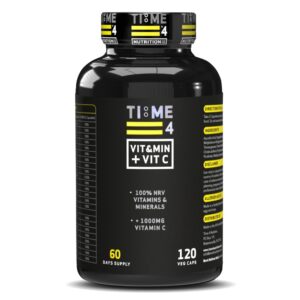
Time 4 Joint Pro – Our Joint Protection Formula contains 16 active ingredients including Glucosamine & Chondroitin in specific ratios to help support bone, joint, cartilage & connective tissue health.
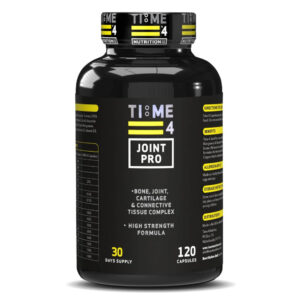
Time 4 Test – Ultra High Strength Test Booster designed to support natural testosterone levels & comes in a convenient capsule format with 30 days supply per tub.
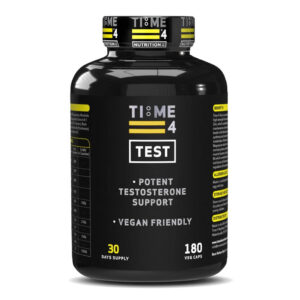
Time 4 Immune Pro – High strength immune supplement providing a unique combination of natural substances designed to enhance the body’s immune system.
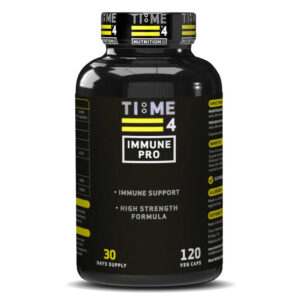
Conclusion
Increasingly, science is showing us how important vitamin D is, for both good health, the treatment and prevention of disease, and optimal physical performance, yet this cheap and easy to access vital nutrient receives very little attention in the mainstream media. Perhaps its time you take a closer look at vitamin D and see how it can benefit you. It might just give your health and performance the boost they need.
